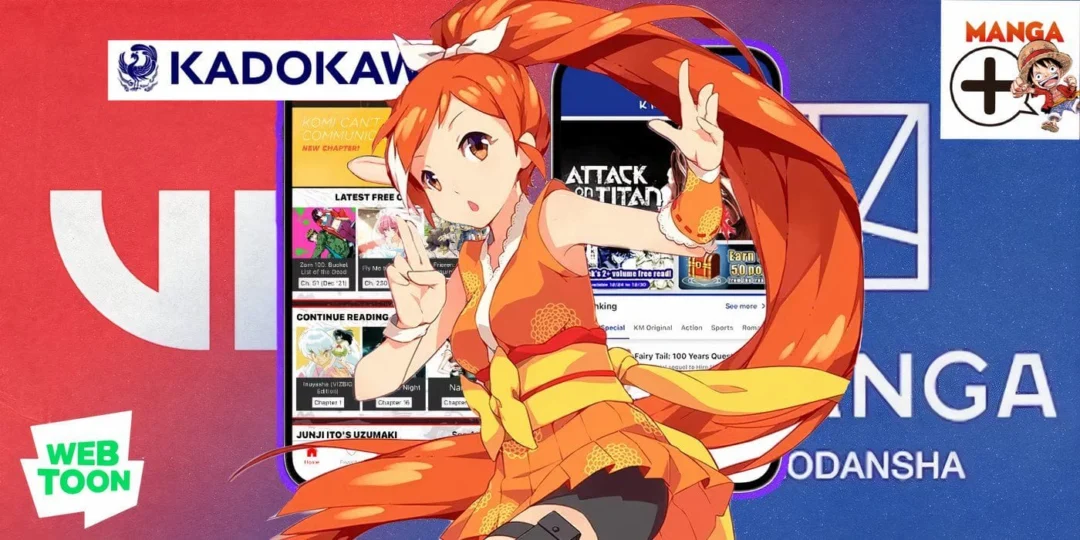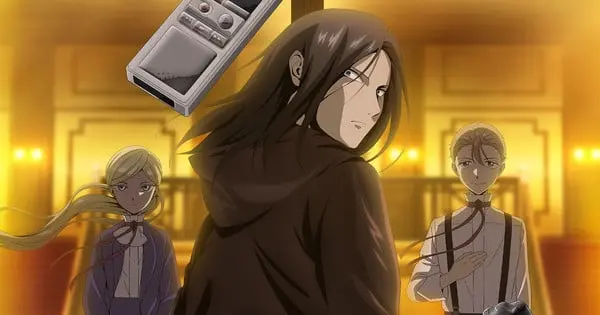Manga, the Japanese art form of comic books and graphic novels, is experiencing an unprecedented global boom. With its diverse genres, compelling storytelling, and distinctive art style, manga has captivated audiences worldwide. The industry is not just surviving; it’s thriving, with projections estimating a market size of $15.6 billion in 2024 and a staggering growth to $66.2 billion by 2033. This surge in popularity is fueled by the increasing accessibility of digital platforms and the global reach of Japanese pop culture. However, with this rapid expansion comes the risk of repeating past mistakes, particularly in the realm of adaptations. The question is: Can the manga industry learn from the pitfalls that have plagued other entertainment mediums, especially those experienced by streaming giants like Netflix?
The Meteoric Rise of Manga
The manga market is currently experiencing explosive growth. In 2024, the global market is estimated at $15.4 billion, with projections reaching $54.3 billion by 2033, exhibiting a compound annual growth rate (CAGR) of 15%. This rapid growth is driven by several key factors. Digital platforms have democratized access to manga, allowing readers worldwide to enjoy their favorite titles on smartphones, tablets, and computers. Services like Shonen Jump+ and Manga Plus are experiencing significant uptake, especially among younger audiences, with subscription models providing instant access to a wide variety of titles. The Asia-Pacific region currently dominates the market, accounting for over 85% of revenue in 2024, and is expected to see the highest CAGR at over 21% from 2025 to 2030. This region’s robust digital infrastructure and high smartphone penetration are significant drivers of this growth.
Another key factor in manga’s growing influence is the rise of webtoons, particularly in South Korea and China. These digital comics, published in a vertical scroll format, are catering to the preferences of mobile-first readers. This format is influencing how manga publishers adapt their works, pushing them to explore new formats to tap into a broader audience.
The Allure of Adaptation
The popularity of manga has naturally led to an increasing number of adaptations into other forms of media, particularly anime. The majority of anime are adaptations of manga and light novels, rather than original ideas. This is largely due to financial reasons. Adapting a series with a pre-existing fanbase is a safer option, as the manga’s popularity can serve as a marker for potential success. Series like My Hero Academia and Demon Slayer saw explosive growth in popularity after their anime adaptations were released, demonstrating the power of this cross-media approach.
However, the relationship between manga and anime is not always smooth. While faithful adaptations can enhance a manga’s popularity, poor adaptations can alienate fans and damage the franchise’s reputation. Some manga series take decades to be adapted into anime due to various factors, including the popularity of the manga, the complexity of the story, and behind-the-scenes issues.
Netflix’s Adaptation Struggles: A Cautionary Tale
Netflix, with its vast resources and global reach, has made significant efforts to adapt manga and anime into live-action series. While some of these adaptations have been successful, many have been met with criticism from fans and viewers. Early attempts such as Death Note and Cowboy Bebop were considered subpar due to a lack of faithfulness to the source material, changes to key characters, and a general misunderstanding of the original stories. These failures severely impacted Netflix’s reputation, leading many to lose hope in their ability to successfully adapt anime.
One of the major issues with Netflix’s early adaptations was the significant changes made to the plot, and the characters themselves. For example, the live-action version of Death Note altered major aspects of the story and the character of Light, losing the unique appeal of the original. Similarly, Cowboy Bebop‘s adaptation was criticized for over-stacking storylines and failing to capture the essence of the beloved anime. These adaptations often lacked the flavor of the original series, in part because the original creators were not involved in the process.
However, Netflix has shown a willingness to learn from its mistakes. The successful live-action adaptation of One Piece proved that fantastical anime can be successfully brought to the live-action medium. A key factor in One Piece’s success was the involvement of the manga’s creator, Eiichiro Oda, who served as a series producer. This ensured that the adaptation remained faithful to the source material and maintained the heart of the original manga.
Lessons for the Manga Industry
The manga industry should take note of Netflix’s struggles with adaptations to avoid repeating similar mistakes. Here are some key lessons:
1. Respect the Source Material
Faithfulness to the original story, characters, and themes is crucial for successful adaptations. Fans are often deeply invested in the source material, and drastic changes can lead to disappointment and backlash. While some adaptations can take creative liberties, the core essence of the original work should be respected.
2. Involve the Original Creators
Including the manga creators in the adaptation process can significantly improve the final product. Creators can provide valuable insights into the story, characters, and themes, ensuring that the adaptation remains true to the original vision. The involvement of Eiichiro Oda in One Piece is a prime example of this.
3. Understand the Fanbase
Adapting a manga is not just about replicating the story; it’s about understanding the fanbase and what makes the original work so beloved. Adaptations should capture the spirit and tone of the original, catering to the expectations of existing fans while also attracting new viewers.
4. Avoid Over-Westernization
One of the criticisms leveled against some anime adaptations is the tendency to “Westernize” the story and characters. This can lead to a loss of the unique cultural elements that make manga so distinctive. Adaptations should respect the cultural context of the source material and avoid making unnecessary changes for the sake of perceived Western appeal.
5. Address Digital Fragmentation
The increasing number of digital platforms for manga has created a fragmented and confusing ecosystem for readers. Much like Netflix’s fragmented video library, different manga publishers’ digital platforms offer inconsistent content access, confusing subscriptions, and separate apps. This could ultimately hinder the spread of manga as readers become frustrated by this complicated landscape. A more unified approach could benefit both publishers and readers.
6. Focus on Quality over Quantity
The manga market’s rapid growth should not come at the expense of quality. Publishers and adaptation studios should focus on creating well-produced, high-quality content that honors the source material and satisfies the audience. This includes avoiding the overuse of CGI that does not fit with the aesthetic of the source material, a common complaint among fans.
The Future of Manga
Manga’s popularity shows no signs of slowing down. With its ever-expanding global reach, the industry has the potential to become an even more significant force in the entertainment world. However, the future success of manga will depend on its ability to learn from the mistakes of others, particularly in the realm of adaptations. By respecting the source material, involving original creators, understanding the fanbase, and addressing the challenges of the digital landscape, the manga industry can continue to thrive and deliver engaging, high-quality content to its ever-growing audience. The key is to avoid the pitfalls of past adaptation attempts and forge a path that stays true to the spirit of manga. The success of One Piece’s live-action adaptation shows that it is possible to overcome the hurdles that previously plagued such projects.










